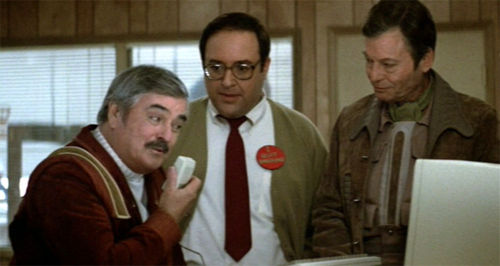We Are What We Do Not Automate

For a while I’ve been keeping a mental list of things I used to have to do myself that technology now does for me. Like: stamp envelopes, wash dishes, pay bills. But nothing snaps the encroachment of technology into focus like buying a car.
A few months ago, I bought a new car – my first new car, ever, actually – a 2009 Mini Cooper S. And the differences are stunning. Here’s a list of things my new car does for me that I used to have to do myself.
- Change gears. Okay, automatic transmissions are not new, but this one’s the best I’ve ever used. Fast, tight, fun.
- Roll down the windows without turning a crank. (Also not new, but new to me. One of my favorite little touches: Holding down the unlock button on the key fob from outside the car unlocks all the doors, rolls down both front windows, and cracks open the sunroof.)
- Unlock the door without a key. We opted for a keyless entry system, and it’s like living in the future. You just walk up to the car with your keys in your pocket. Tap a button on the door handle and the door magically unlocks. Get in and hit the ignition button and the car’s running.
- Open the hatchback without a key. Same deal: Walk to the hatchback with your arms full of stuff. Tap it, and it’s open.
- Turn on the headlights and darken the rearview mirror when it gets dark.
- Turn on the windshield wipers when it rains. You have to tap a control to turn on the automatic wipers, but once they’re on, they adjust to the speed of the rain, and even stop when the rain stops.
- Change a tire. The car doesn’t change its own tires, but it doesn’t need to: it has run-flat tires. It didn’t even come with a jack or a spare.
And then there are the things that I don’t have to experience anymore:
- My head touching the ceiling when sitting normally.
- Getting a static shock every damn time I got out of the car.
- The tyranny of the alarm going of just because I opened the hatchback.

There’s a scene in one of the Star Trek movies – the one with the whales – when the crew winds up back in the 1980s. Scotty needs to use an old Macintosh computer. He looks at it and says, “Computer, respond.” When it doesn’t, he picks up the mouse and yells into it. “Computer, respond!”
It’s played for laughs in the movie, and it is funny, but it occurs to me that it might not be that far off. In a couple months of driving the new car, I’m already so used to these automations that I keep forgetting to shift or turn on my lights when I drive the old car.
I don’t lament this technological encroachment – I love it. Having the car take care of little things like adjusting the windshiled wipers frees me to focus on the fun part: driving.
As as much as the car does automatically, it’s interesting to see which bits the designers left manual. To adjust the seat up or down requires pumping a lever. And the Mini is known for its excessive use of toggle switches on the dash.
All of these things make the car feel tactile, mechanical, and under control, even though I’m doing less to control it. In the near future, interaction design will be as much about sculpting technological interactions as it is about deciding which parts to leave unautomated.
Just imagine what things we do today that, someday, we’ll be amazed we ever did without technology.
